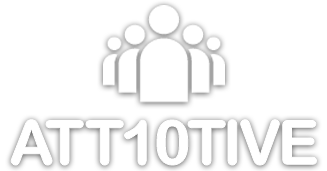Shaping Children’s and Young People’s Identity
Shaping Children’s and Young People’s Identity
by Paul Taiwo
Possessing an optimistic solid identity is a crucial component in young people’s lives,
meaning knowing who they are, setting standards and goals shapes them into making intelligent decisions in the future, contributing to the betterment of society and communities. Unfortunately, children and young people that do not have a “positive sense of who they are and a feeling that they do not make an important contribution wherever they are, can lead to mental health issues, drug abuse, and gang violence. The article on ‘Identity and Belonging’ insinuated that “The theme of Identity and Belonging is about children developing a positive sense of who they are, and feeling that they are valued and respected as part of a family and community.” (Aistear: the Early Childhood Curriculum Framework)
The race of children and young people is a contributing factor for constructing their identity and belonging. “Changing family and social structures are making matching an even more complex process as a child requiring a placement may have parents from very different ethnic and religious backgrounds. For instance, children who cannot live with their birth family have an opportunity to experience diverse cultures, ethnicity different from their own. This enables young people to understand “understand the different roles of people in the community” as well as, seeing themselves as a wider part of society. Conversely, this can be problematic as young people may not have a strong sense of belonging. “development of multiple identities from the network of relationships that a child has meaning, they do not know who they are, or what they stand for. This is because encountering different cultures and identities may be contrary to one another, meaning one culture and identity may have contrary views and opinion to another identity, which make it difficult for young people to pick aside.
Additionally, looked-after children may find it burdensome to establish a robust sense of identity. “They may also experience a conflict of loyalty between their carer and their birth family, particularly if they enter care at an older age.” (National Institution For Health and Care). The solution to this dilemma would be educating care children and young people about family history and “life outside the care system and the reason they entered care.” ( Additionally, children in care should be educated on recognizing discrimination, ethnic and cultural heritage. All these factors play a part in children and young people developing a strong sense of identity and belonging.
Moreover, research shows that young people and children in care find it difficult to transition into adulthood due to discrimination. “Foster children can experience discrimination with regard to race, religion, disability, gender and sexual orientation as well as because they are in care.”. This would inevitably cripple their feelings of self-worth and identity. To tackle discrimination carers must understand its impact on children and young people.
Overall, developing a powerful sense of identity and belonging enables children and young people to experience deep connections with people in the varying background, which in turn, increasing their employability prospect because building positive relationships is a key employability skill. “personal allowance, according to the LBBD policy on remuneration, and given responsibility for tasks, according to age, which will assist them in developing confidence and independence skills.”. Additionally, in a foster care home, a child could develop trust with foster parents, teaching them values and skills used in the future, constructing a positive identity in the child. However, this could be a challenge because children and young people who have pessimistic feelings of identity and belonging, may become “less resilient than their peers, less able to cope with adversity and to achieve their potential, due to low self-expectations.”
References;
Children Act 1989 Guidance and Regulations Volume, Aistear: the Early Childhood Curriculum Framework and National Institution For Health and Care)

